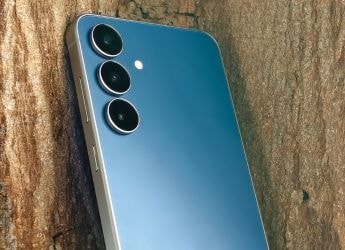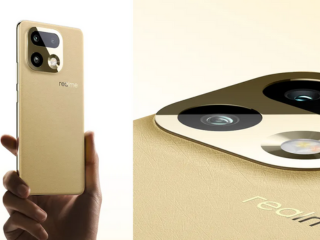- Home
- Science
- Science News
- NASA Further Deploys Solar Panel Array on Lucy Spacecraft Ahead of Visit to Jupiter’s Trojan Asteroids
NASA Further Deploys Solar Panel Array on Lucy Spacecraft Ahead of Visit to Jupiter’s Trojan Asteroids
The spacecraft had failed to fully deploy one of its 24-feet solar arrays when it was launched in October 2021.

Photo Credit: NASA/ Southwest Research Institute
An illustration of NASA's Lucy spacecraft passing one of Trojan Asteroids near Jupiter
NASA's Lucy spacecraft mission was successful in further deploying the solar panel array that will power the craft, according to the space agency. The mission team was able to deploy the unlatched solar array between 353 degrees and 357 degrees open. NASA's team performed the operation remotely, and the solar array is now under more tension in its expanded form, while providing more stability to the spacecraft. Lucy will need all its panels to be deployed in order to find enough energy as it makes its way toward Jupiter's Trojan asteroids.
One of the arrays on the spacecraft, measuring twenty-four feet, had failed to deploy fully after Lucy was launched in October 2021. Since then, the team behind the Lucy mission at NASA have been working to troubleshoot the deployment of the array. NASA recently stated that the deployment was not fully successful at launch due to a faulty lanyard – the mechanism through which the arrays were pulled.
While Lucy is in orbit around Earth, it receives plenty of sunlight to be fully powered even when not fully deployed. However, as it makes its way toward Jupiter's Trojan asteroids it will need its solar arrays to be fully deployed to find enough energy that is far away from the Sun. The spacecraft will also move past the main asteroid belt where it will conduct flyby studies as well. The spacecraft will use Earth's gravity assistance to make its way to its first target – 52246 Donaldjohanson, an asteroid in the inner asteroid belt – by 2025.
Before it can do that, the spacecraft will need its solar array to be fully deployed. However, NASA scientists will have to pause their troubleshooting efforts for a while, as the spacecraft enters a period of limited communications due to thermal constraints. Lucy will not communicate with Earth using its high-gain antenna for several months but remain in contact using its low-gain antenna.
Get your daily dose of tech news, reviews, and insights, in under 80 characters on Gadgets 360 Turbo. Connect with fellow tech lovers on our Forum. Follow us on X, Facebook, WhatsApp, Threads and Google News for instant updates. Catch all the action on our YouTube channel.
Related Stories
- Samsung Galaxy Unpacked 2025
- ChatGPT
- Redmi Note 14 Pro+
- iPhone 16
- Apple Vision Pro
- Oneplus 12
- OnePlus Nord CE 3 Lite 5G
- iPhone 13
- Xiaomi 14 Pro
- Oppo Find N3
- Tecno Spark Go (2023)
- Realme V30
- Best Phones Under 25000
- Samsung Galaxy S24 Series
- Cryptocurrency
- iQoo 12
- Samsung Galaxy S24 Ultra
- Giottus
- Samsung Galaxy Z Flip 5
- Apple 'Scary Fast'
- Housefull 5
- GoPro Hero 12 Black Review
- Invincible Season 2
- JioGlass
- HD Ready TV
- Laptop Under 50000
- Smartwatch Under 10000
- Latest Mobile Phones
- Compare Phones
- Huawei Nova 15
- Huawei Nova 15 Pro
- Huawei Nova 15 Ultra
- OnePlus 15R
- Realme Narzo 90x 5G
- Realme Narzo 90 5G
- Vivo S50 Pro Mini
- Vivo S50
- Asus ProArt P16
- MacBook Pro 14-inch (M5, 2025)
- Huawei MatePad 11.5 (2026)
- OnePlus Pad Go 2 (5G)
- Huawei Watch 10th Anniversary Edition
- OnePlus Watch Lite
- Acerpure Nitro Z Series 100-inch QLED TV
- Samsung 43 Inch LED Ultra HD (4K) Smart TV (UA43UE81AFULXL)
- Asus ROG Ally
- Nintendo Switch Lite
- Haier 1.6 Ton 5 Star Inverter Split AC (HSU19G-MZAID5BN-INV)
- Haier 1.6 Ton 5 Star Inverter Split AC (HSU19G-MZAIM5BN-INV)

















